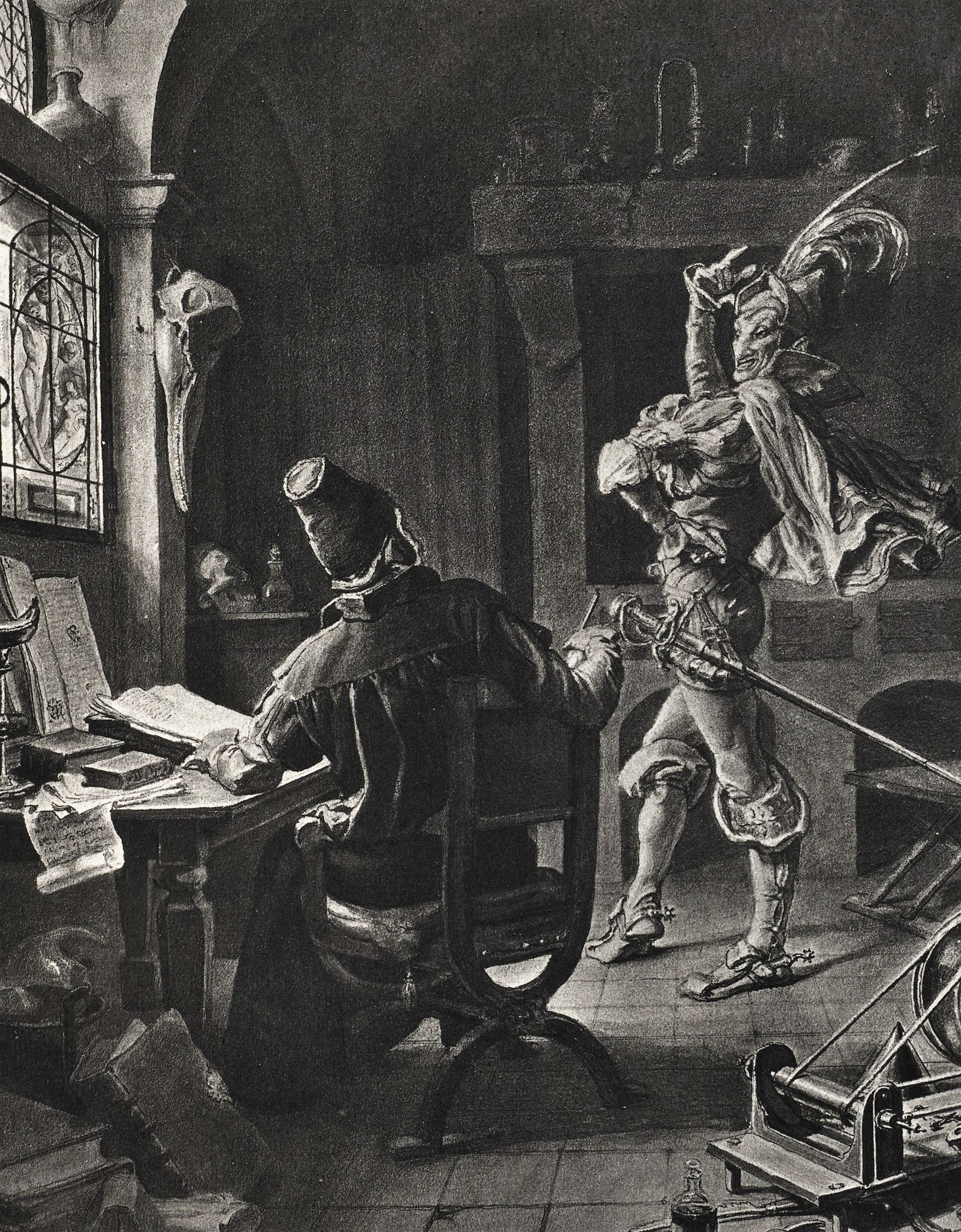Faust's Protagonist
Given Goethe’s choice of title, it might seem obvious that the central character is Faust himself. However, the history of the text’s French reception shows that was neither obvious nor inevitable. Indeed, the first partial translation of the first Faust, prepared in 1808-1809 by Madame de Staël and published in her On Germany, puts Mephistopheles firmly in the foreground: “The devil is the hero of the play; the author imagines him not as a grotesque phantom, like one typically tells children he is; instead he has cast him, one might say, as the villain par excellence. All other villains appear to be amateurs in comparison.”
Such attraction to this diabolical character tracks closely to the dark Romanticism that made its way across Europe in the 1810s and 1820s.
It was in 1823 that the first two (nearly) complete translations of Faust appeared, almost simultaneously. According to the preface of one of these, Sainte-Aulaire’s translation, it is rather Margaret who stands as the character at the heart of the text’s interest. As soon as she enters, Sainte-Aulaire writes, “the dramatic energy of the play builds up ceaselessly until the end.” And this end shows Margaret at the moment of climactic death while leaving us in the lurch about Faust himself, who is relegated to the plot’s background.


